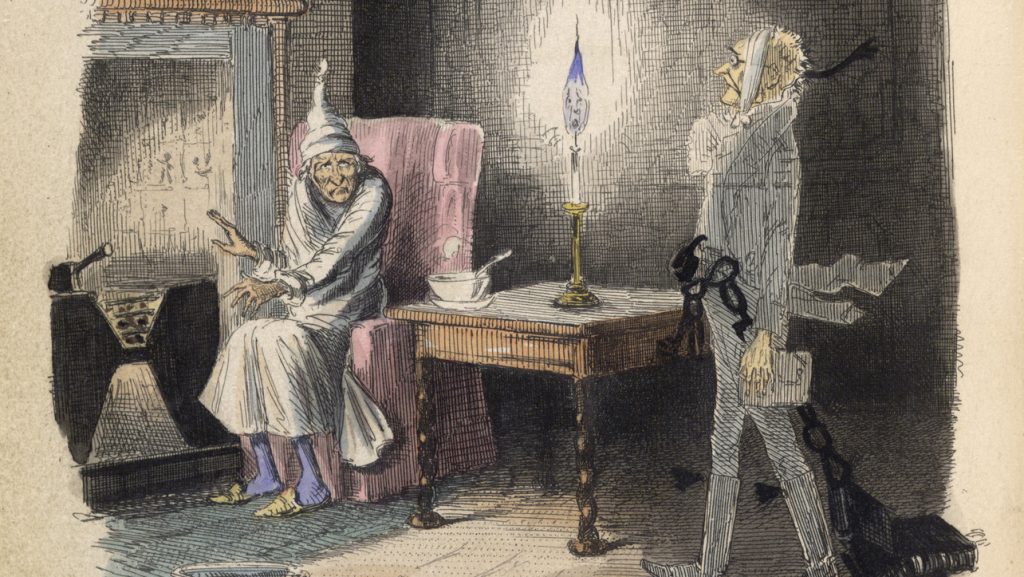Charles Dickens’s A Christmas Carol (above) was first published today in 1843 and all 6,000 copies promptly sold out by Christmas Eve. Dickens tells the story of Ebenezer Scrooge, a ‘squeezing, wrenching, grasping, scraping, clutching, covetous, old sinner’, bringing misery to everyone around him, who by Christmas Day is transformed to become as ‘light as a feather, happy as an angel, merry as a schoolboy’. The book has never been out of print and still excites debate, with some claiming it as a tale of Christian redemption, while others think Dickens was aiming at a secularised Christmas.
‘Running to the window, he opened it, and put out his head. No fog, no mist; clear, bright, jovial, stirring, cold; cold, piping for the blood to dance to; Golden sunlight; Heavenly sky; sweet fresh air; merry bells. Oh glorious! Glorious!’ Ebenezer Scrooge on Christmas Day
Infante Luis of Spain – the King of Spain’s son – became the youngest cardinal ever, at the age of eight and a half, today in 1735. He had been made Archbishop of Toledo and Primate of Spain at eight and a quarter. Paintings of the time show him togged up in his miniature cardinal’s robes. He threw off all his religious titles in his 20s.
Today in 1516, the Fifth Lateran Council, meeting in Rome, banned preachers from predicting the future. The measure was aimed at the 16th century’s apocalyptic prophets of doom, who were frightening their listeners by giving dates and times for the second coming.
‘They are in no way to presume to preach or declare a fixed time for future evils, the coming of Antichrist or the precise day of judgment; for Truth says, it is not for us to know times or seasons which the Father has fixed by his own authority. Let it be known that those who have hitherto dared to declare such things are liars, and that because of them not a little authority has been taken away from those who preach the truth.’ Fifth Lateran Council, ‘On How to Preach’
Today in 1970, Amazing Grace, the hymn written by John Newton almost exactly 200 years earlier, made a splash in the British pop charts. The song was sung a cappella by Judy Collins, the American folk singer, who had found it helpful in her recovery from alcohol addiction. It proved hugely popular, re-entering the British charts several times over 1971 and 72, and peaking at No. 5.
Andreas Osiander, the Lutheran theologian from Nuremberg, who proofread Copernicus’s great book, On the Revolutions of the Celestial Spheres, was born today in 1498. Osiander is something of a literary villain, because he added a preface to the book, which said that Copernicus’s radical (not to mention heretical) description of the Earth orbiting around the Sun was just hypothetical and not to be confused with physical reality. Because Osiander failed to sign the preface, it was assumed Corpernicus had written it himself. It was only after the astronomer Johannes Kepler revealed in 1609 that the preface was not by Copernicus that the book, published 66 years earlier, in 1543, was taken more seriously and listed on the Vatican’s Index of Forbidden Books.
Image: British Library
